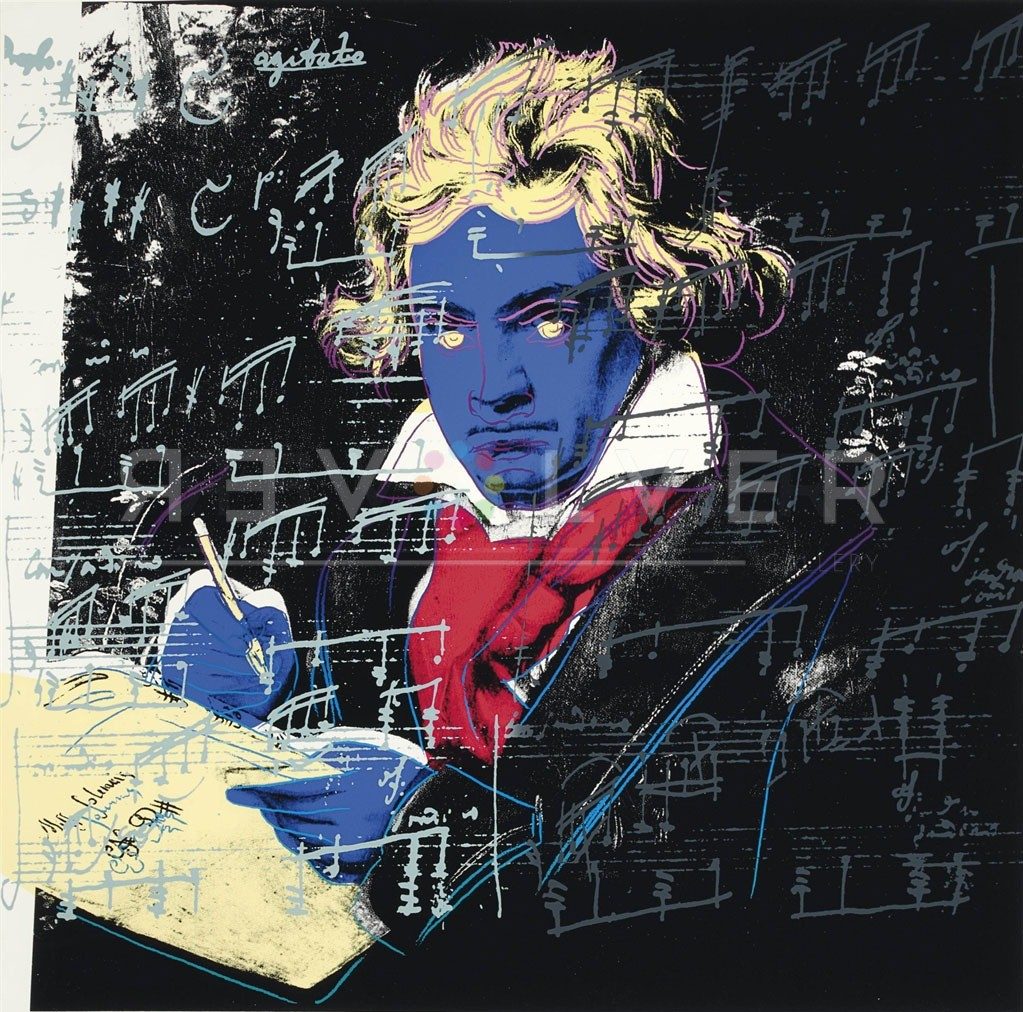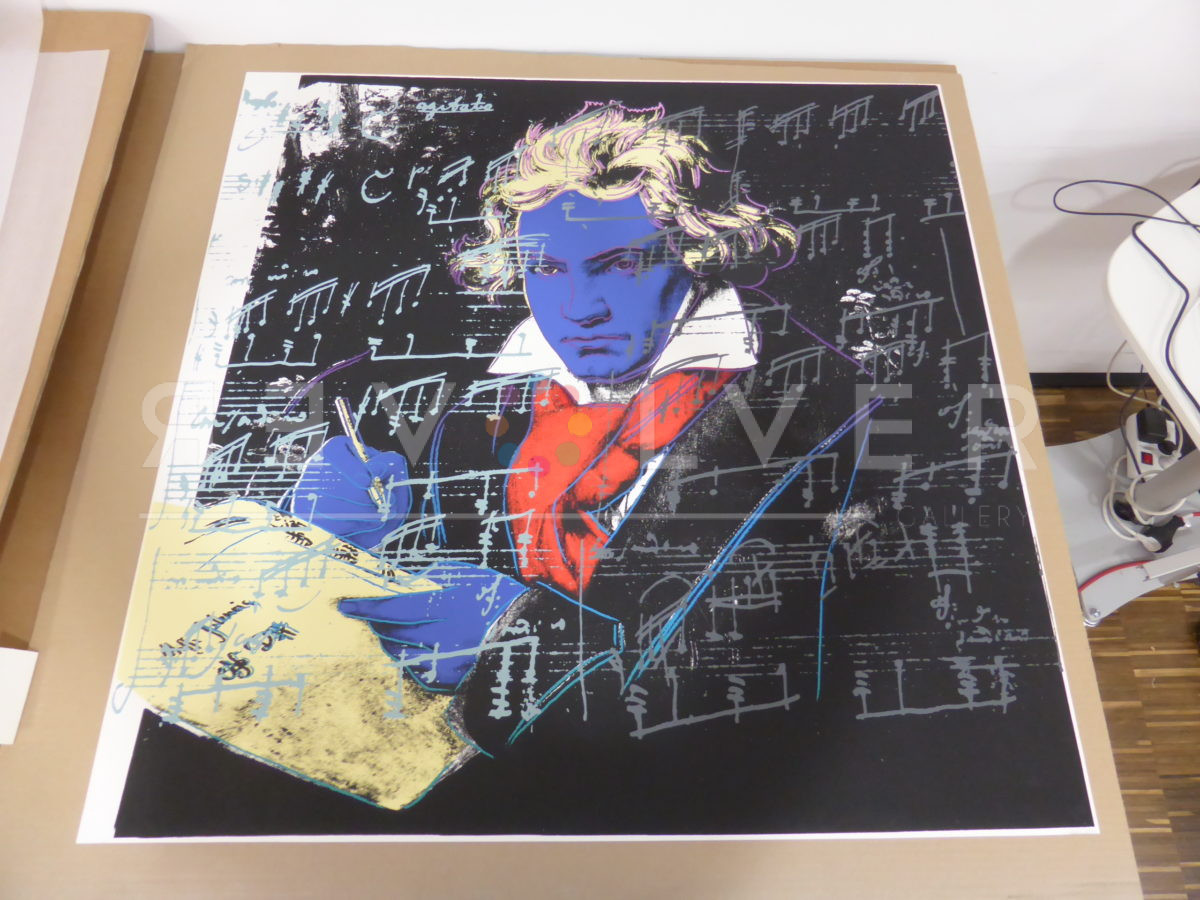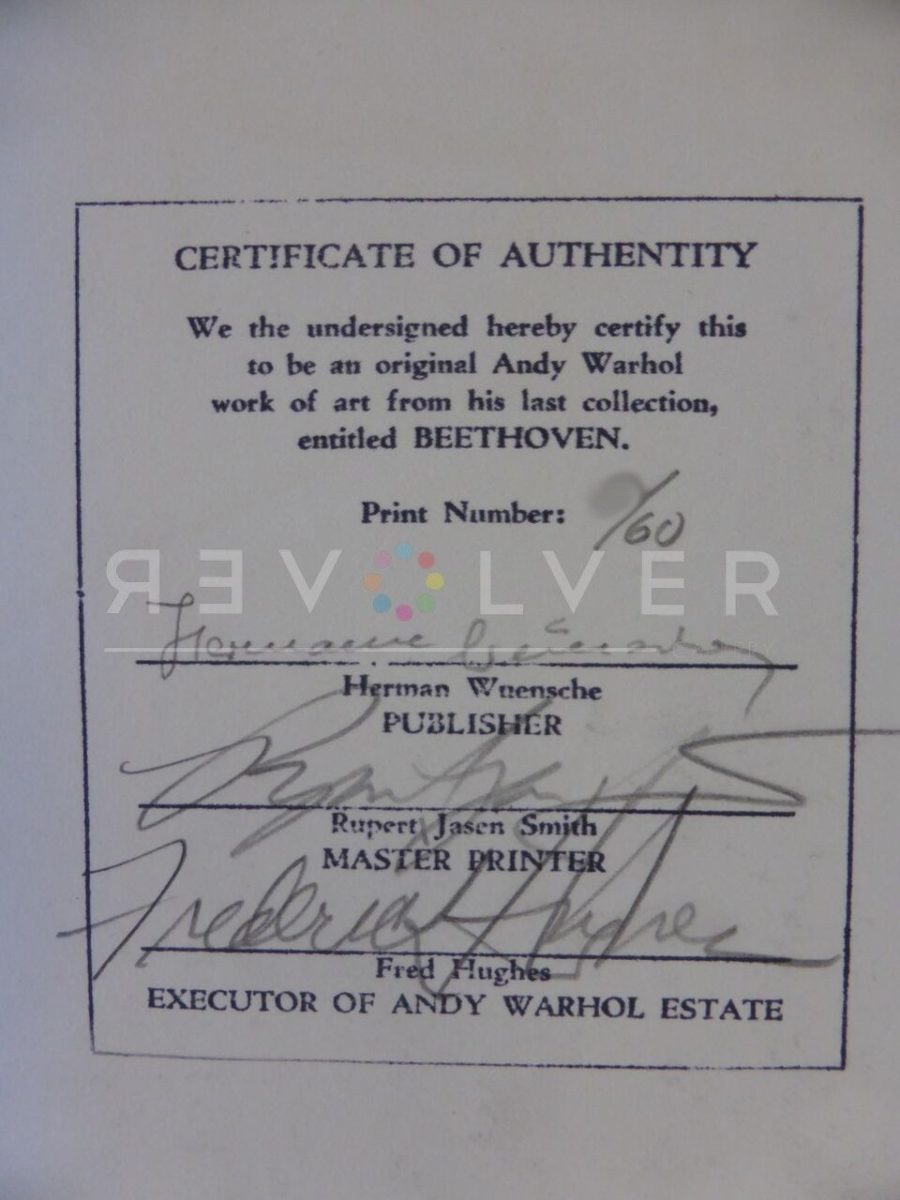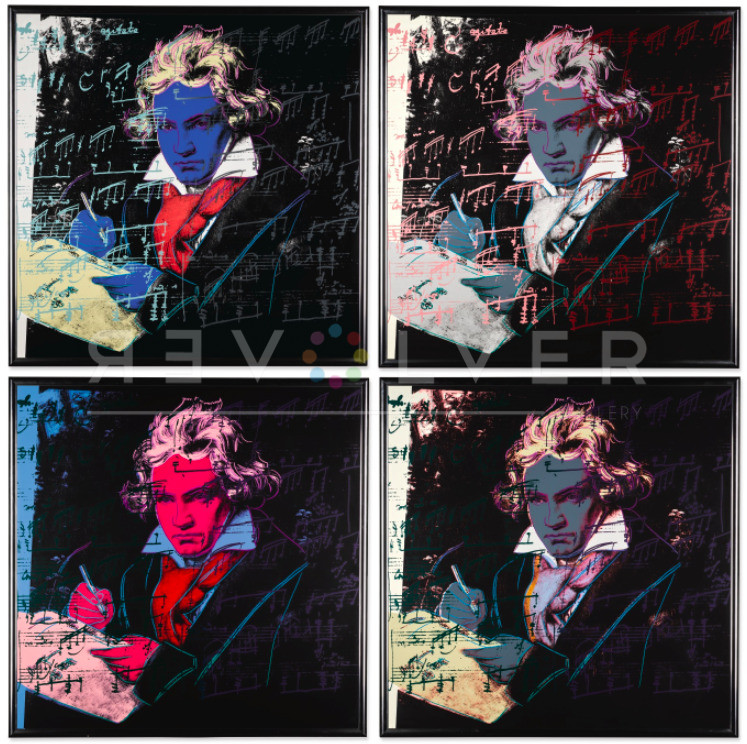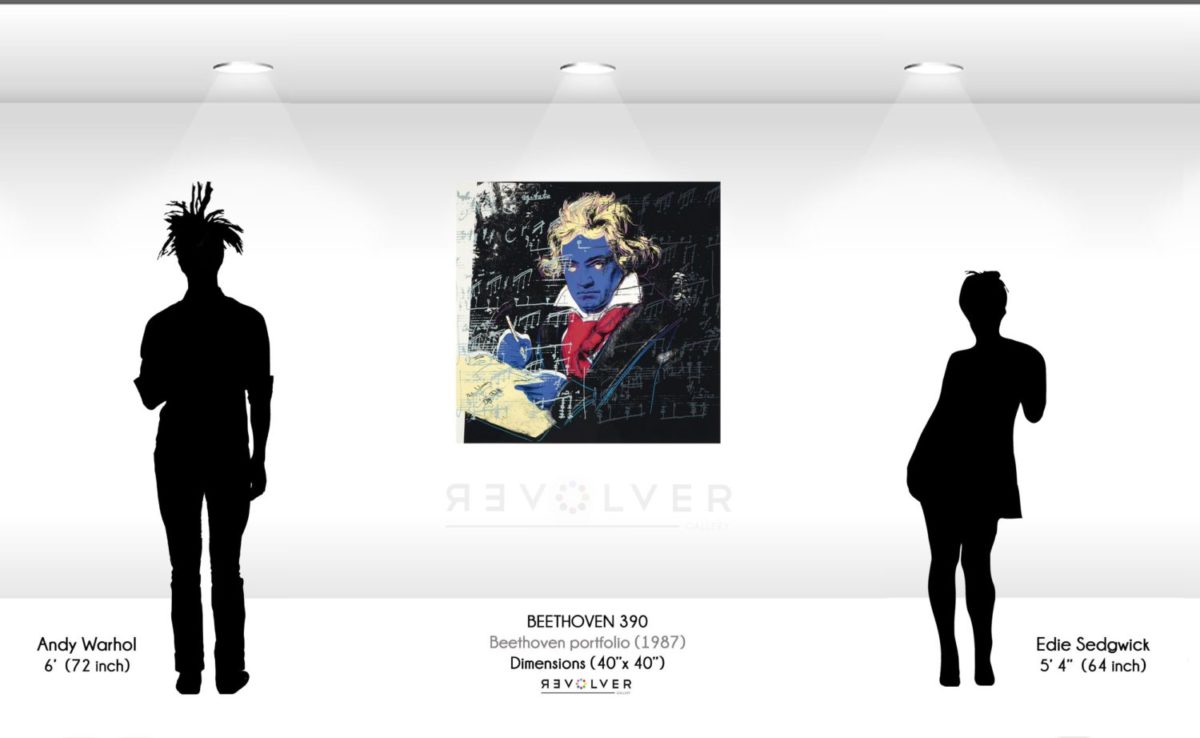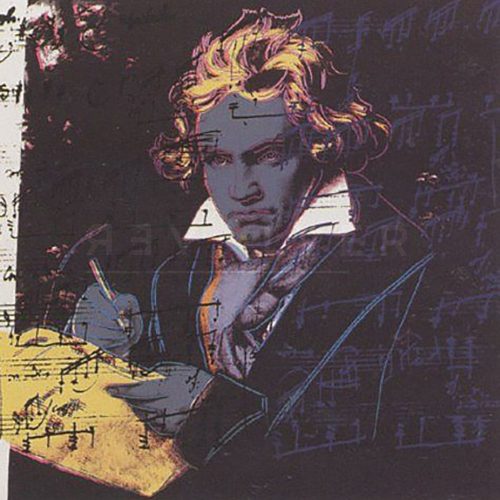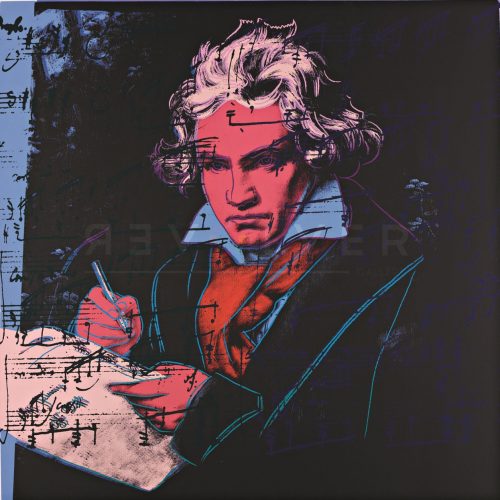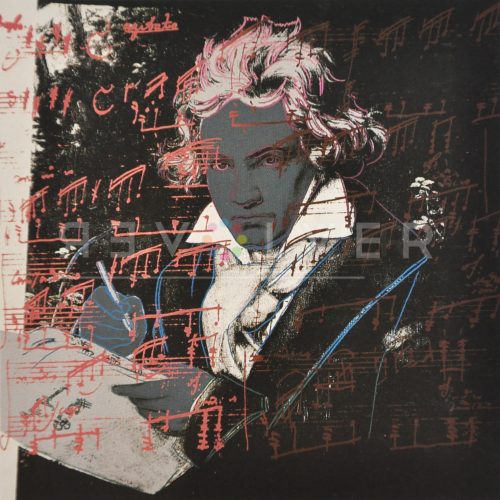Beethoven 390 by Andy Warhol is one of four screenprints from Warhol’s Beethoven portfolio published in 1987. Ludwig van Beethoven is one of the most notable composers of the 19th century known for compositions such as Symphony No. 9, Sonata No. 23, and Sonata No. 14 (the ultra-famous Moonlight Sonata). Beethoven’s notoriety certainly resonated with Andy Warhol, whose interests in fame and art inspired him to create Beethoven 390 in 1987. The portfolio consists of four portraits of Beethoven reimagined by Warhol in the pop art style. Warhol references the 1820 portrait of Beethoven by German painter Joseph Karl Stieler as a source image for his portfolio. Along with the portrait of Beethoven, Warhol features composition notes that subtly overlay the background and Beethoven’s figure.
Each of the four portraits contains the same source image of Beethoven’s Stieler portrait and composition notes. However, the colors in which Warhol depicts the portrait of Beethoven differ across all four. In Beethoven 390, Warhol depicts Beethoven’s notable untamed hair and stern gaze while he is in the midst of writing a composition. He colors Beethoven’s hair in a cream yellow that contrasts against the black background. The white of his collar and sheet music offer further contrast against the darker colors. Interestingly, Warhol chooses to depict Beethoven’s complexion in a solid blue color. And the vibrant red ascot scarf balances the overall colors of the print. Warhol additionally incorporates a subtle blue and purple outline that traces the various details of Beethoven 390. The outlines emphasize Beethoven’s facial features, his hands, textured hair, and parts of his clothing.
The sheet music that overlays the print is for his Sonata No. 14, also known as Moonlight Sonata. The piece is one of Beethoven’s most notable compositions, achieving global recognition since its conception in 1801. The composition is illustrated finely across the piece in shades of blues and grays. Warhol’s reference to this composition subtly reflects his interests in the themes of notoriety and culture. It’s no surprise that he would incorporate Beethoven’s most iconic compositions into the piece.
Beethoven 390 slightly differs from other portfolios and figures he’s referenced in his prior works, such as his Mao, Mick Jagger, and Reigning Queens series, to name a few. Instead of a celebrity or political figure, Warhol’s Beethoven focuses on a 19th century master, whose contributions to music continue to impact the world to this day. The portfolio is a piece in which Warhol departs from his common themes of commercial commodities and pop culture. Instead, he shifts towards depicting a notable figure from the past. In the same way, however, by including Beethoven in his canon of famous figures, Warhol blurs the line between a classical master and today’s super-popular celebrities. Beethoven 390 thus challenges conceptions of Warhol’s work as shallow, or strictly commercial. While the Beethoven portfolio is distinct from other works of Warhol, the portfolio still holds Warhol’s staple connotations of culture and fame.
Photo credit: Portrait of Beethoven with the manuscript of the Missa solemnis by Joseph Karl Stieler, 1820.

